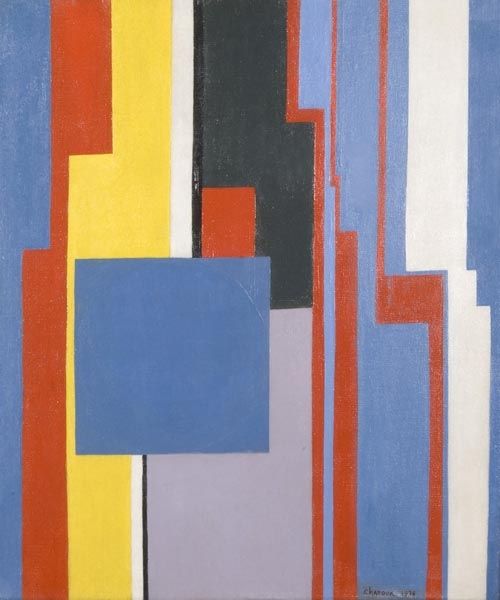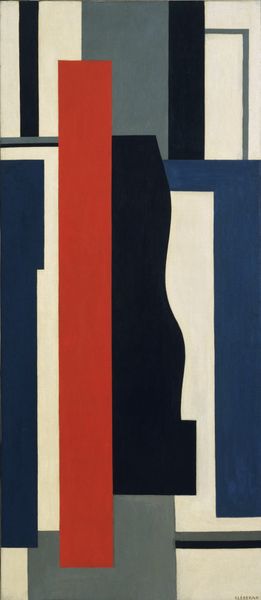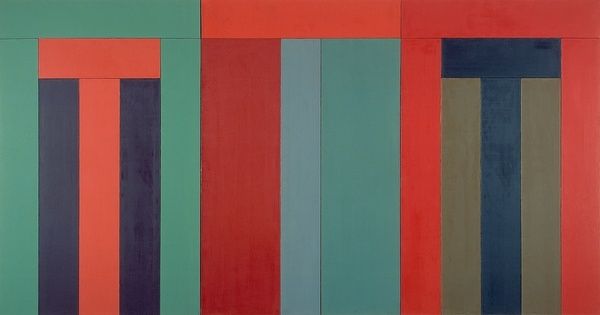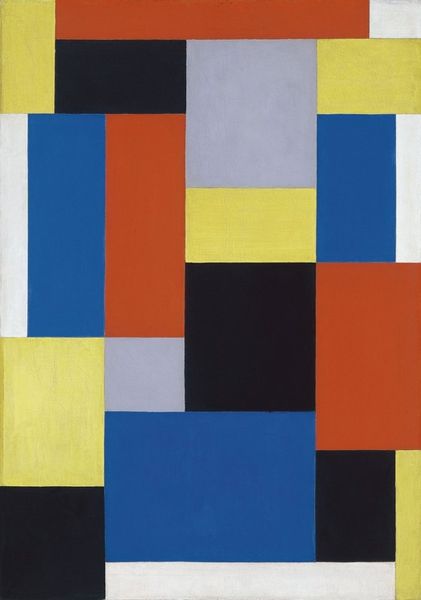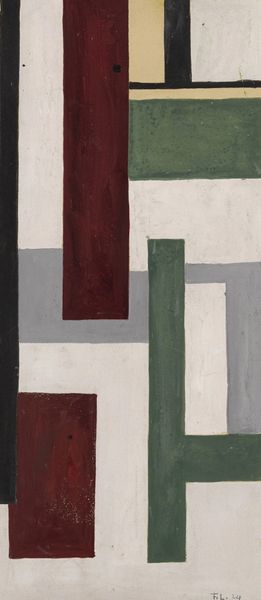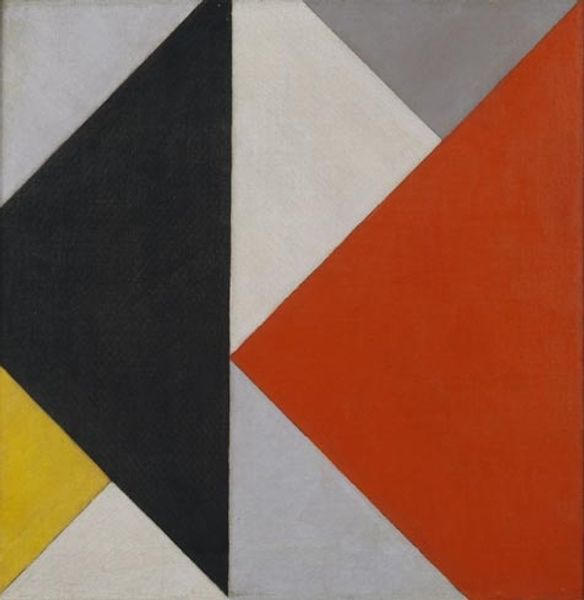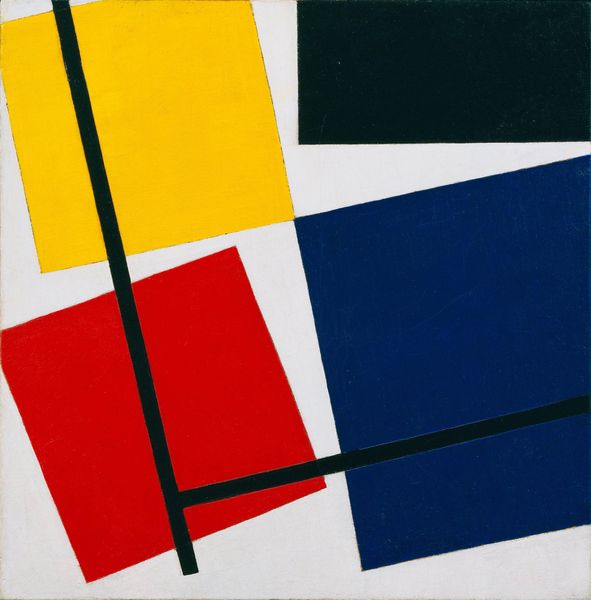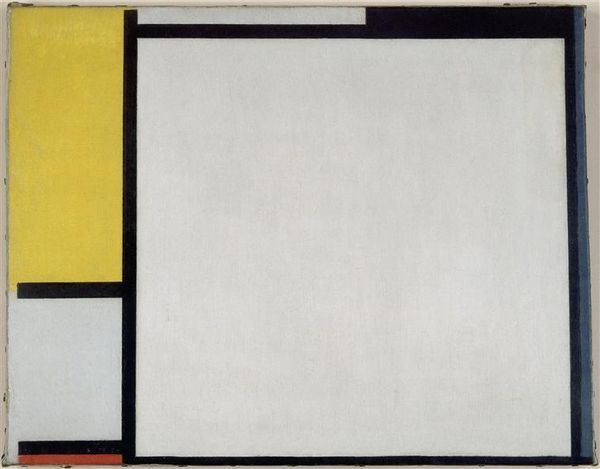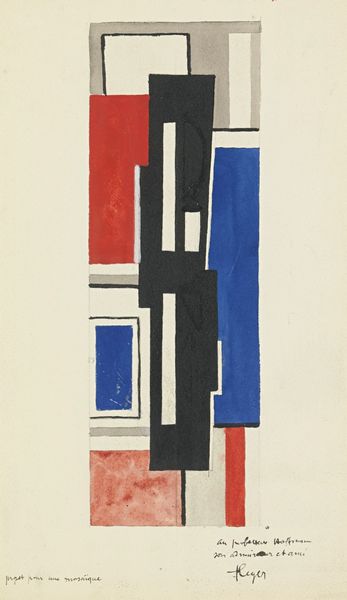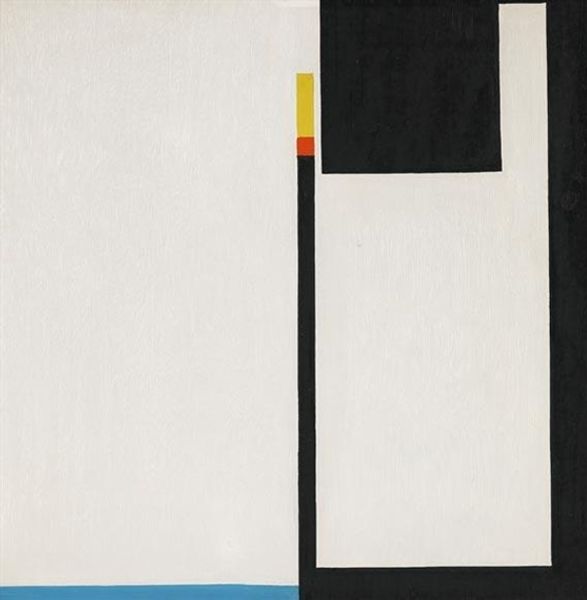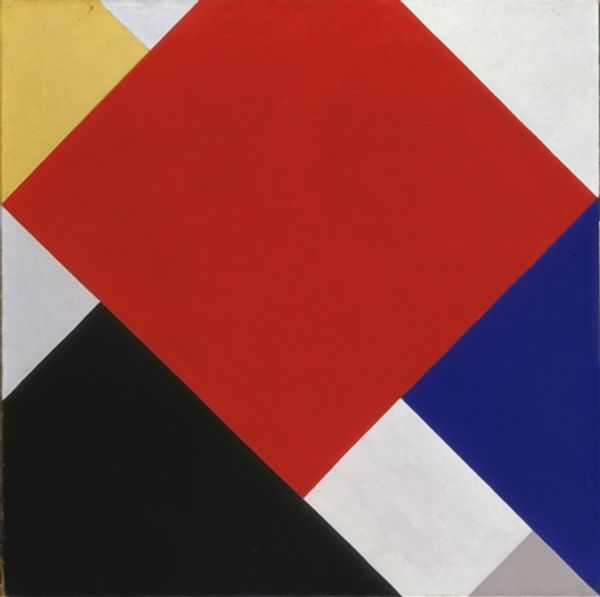
painting, mural
cubism
painting
geometric
abstraction
line
mural
modernism
Copyright: Fernand Leger,Fair Use
Editor: We’re looking at Fernand Léger's "Mural Painting" from 1924. It’s mostly blues, reds, whites and grays, arranged in geometric forms. There’s something almost machine-like about it... a coolness and precision. What strikes you most about it? Curator: The very title "Mural Painting" immediately directs us to consider its intended function. Forget the preciousness of a canvas destined for a wealthy collector's home. This work declares its allegiance to the built environment, to architecture, and by extension, to the people who inhabit and utilize those spaces. Editor: So you're thinking about its social purpose rather than just aesthetics? Curator: Precisely. Look at the materials. These aren't fine pigments delicately applied; this is house paint, industrial colors, likely applied with broad strokes. Léger embraced the materials and techniques of commercial art. It asks us to consider: who was the intended audience, and what kind of visual language was accessible and meaningful to them? How does the choice of geometric forms contribute to that? Editor: It’s less about personal expression and more about a shared visual language? Curator: Absolutely. Léger, like many modernists, was fascinated by the potential of industrial production and its impact on society. The streamlined forms, the bold colors, they echo the aesthetics of the machine age. It challenges traditional notions of art by incorporating elements of everyday life and labor. And, isn’t it fascinating to think of this, not as a painting on canvas, but as a "Mural Painting," intended to be on the wall? Editor: I’m beginning to see this less as a picture and more as a designed object created within a very specific socio-economic context. Curator: Exactly! By thinking about the materials and the means of production, we gain a deeper understanding of Léger’s ambition to create art that was integrated into the fabric of modern life.
Comments
No comments
Be the first to comment and join the conversation on the ultimate creative platform.
